#sciurus niger
Explore tagged Tumblr posts
Text
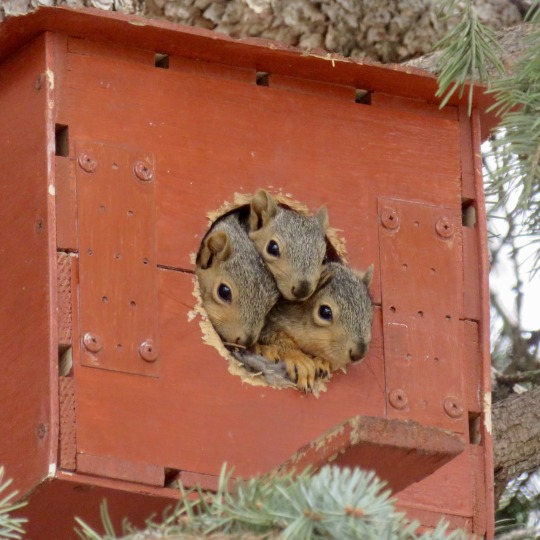
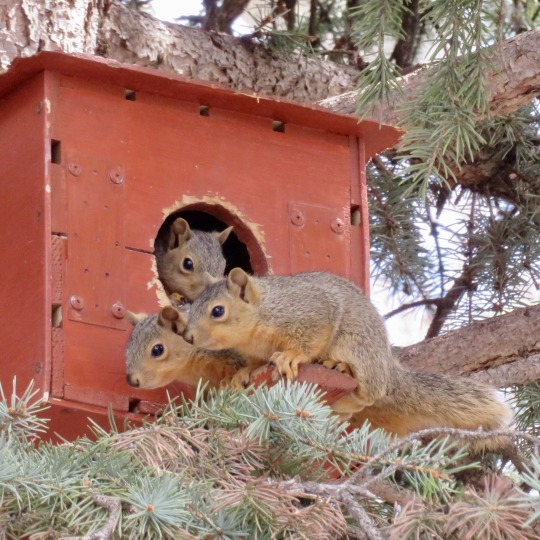
Three baby fox squirrels left their squirrel box for the first time today.
#colorado#photography#squirrel#squirrels#animals#wildlife#sciurus niger#fox squirrel#colorado springs#animal#photo#photograph#nature#outdoors#spring#charles morgenstern#tetramodal#tree#forest#wilderness#mountains#art#artwork#cute#artists on tumblr#photographers on tumblr#environment#southwest#portrait#portraits
69 notes
·
View notes
Text



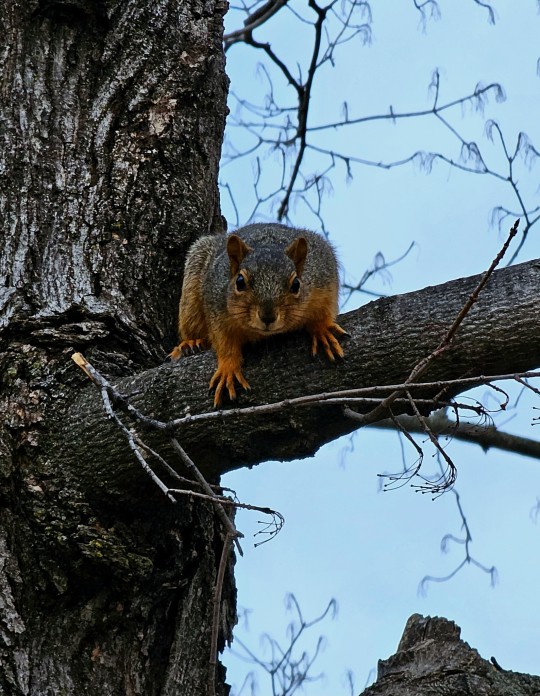
This fox squirrel looked like she was about to pounce on me
9 notes
·
View notes
Text
Me: Hey, will you take a picture of me with the statue of Jesus?
Sister: Of course!
Me: *sees a squirrel that looks different than the ones back home* SQUIRREL! *takes off into the grove of trees to get a pic so I can ID it later*
Sister: ...you literally just had a "squirrel!" moment!
#adhd?#it was a fox squirrel for the record#Sciurus niger#there are fox squirrels that live in Virginia but they're nowhere near as common as the grey squirrels#I'd never seen one in the wild before!#lol#friendship#sisterhood#dork
8 notes
·
View notes
Text

1 note
·
View note
Text
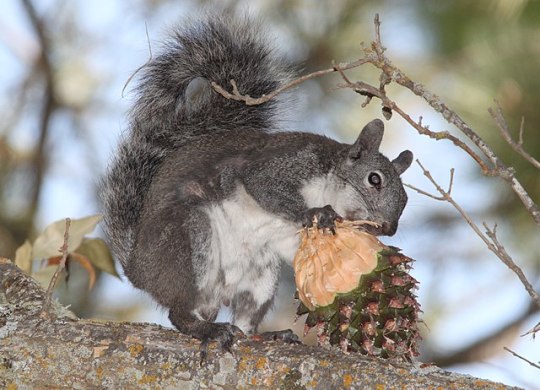
Hey, y'all. Wanna do a quick thing that will make a difference? The Washington Department of Fish and Wildlife is considering uplisting the western gray squirrel (Sciurus griseus) from threatened to endangered. It was listed initially as threatened in 1993, and numbers have continued to decrease due to competition from invasive eastern gray squirrels (Sciurus carolinensis) and fox squirrels (Sciurus niger) as well as turkeys (Meleagris gallopavo), and continued habitat loss and development. Most of the time when you see a squirrel in western Washington, it's an eastern gray. Western grays are still around, but continuing pressure is going to make that less likely in the years to come.
Even if you aren't in Washington, show the WDFW that you care about these little critters by making a public comment; you can find information on how to do that here, to include an email address if you don't want to use the public form. You don't need to write anything super elaborate or long; just a quick note saying you support the uplisting of the western gray squirrel to endangered will work. Then reblog so others can do the same.
The squirrels and I both thank you!
#western gray squirrel#squirrels#endangered species#endangered animals#invasive species#mammals#rodents#wildlife#wild animals#conservation#environment#environmentalism#public comment#animal welfare#nature#animals
111 notes
·
View notes
Text

Eastern Fox Squirrel Sciurus niger
1/8/2023 Los Angeles County, California
#squirrel#squirrels#fox squirrel#eastern fox squirrel#mammal#mammals#rodents#wildlife#nature#wildlife photography#my photos
14 notes
·
View notes
Text




Eastern Fox Squirrel Sciurus niger
#nature photography#wildlife photography#my photos#animals#photographers of tumblr#original photography#nature#mammal#squirrel#eastern fox squirrel
9 notes
·
View notes
Text
Week 4 Observations
1.22.25
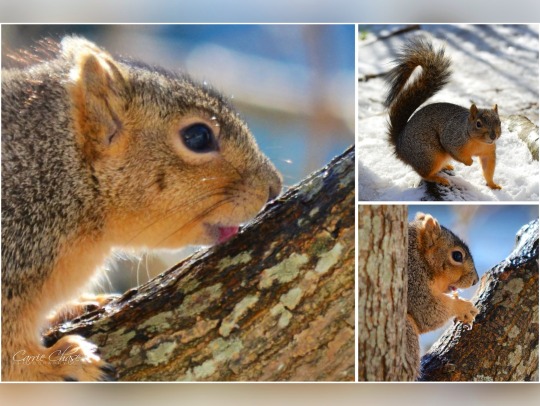
Fox Squirrel
Sciurus niger
Observed in the snow, eating a snack and licking ice on a tree limb at home on Galveston Island 1.22.25. You can see its tongue 😛
They are native to North America and is the most common of tree squirrels. They are on the invasive alien species of Union concern list in Europe.
Their whiskers, claws, abs and more help them navigate their environment. The habitat they thrive in the most are areas with tall trees and little to no understory. They live in leaf nests or tree dens (preferred).
Fun fact: they can jump 15 feet horizontally and free fall to a soft landing of 20 feet or more!
#foxsquirrel #Sciurusniger #citizenscience #mammal #outdoors #nature #squirreltongue #native #january #january22 #2025 #picoftheday #project365 #day22
1.23.25
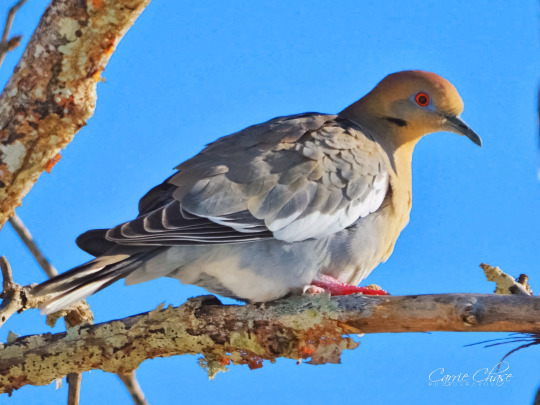
White-winged Dove
Zenaida asiatica
Their native range includes the Southwestern US and down to Central America and has expanded to Texas and surrounding states due to humans providing a reliable food source. Before agriculture exploded they stuck to their native range because their primary food/water source was the saguaro cactus.
I observed this one and its friends in a tree at my home on Galveston Island 1.22.25.
Though this species has lost nesting colonies, is on the wild game list and suffered a population collapse in the 1960s & 1970s it appears to have bounced back and is good at adapting to life with humans.
#whitewingeddove #Zenaidaasiatica #citizenscience #bird #nature #outdoors #january #january23 #2025 #picoftheday #project365 #day23
1.24.25

Dunlin
Calidris alpina
Observed these non breeding adults at Galveston Island State park 1.21.25.
While they winter along the coast they migrate to the arctic tundra to breed.
The population is very big and have a status of “least concern” yet appears to be decreasing and there are some subspecies that are quite endangered.
These birds forage for food on coastal mudflats and sandy beaches in flocks by poking their slightly curved bill in and out of the sand/mud. What’s cool about this is that their bill become a sensitive probe when an area on the end of the bill fills with blood and works with nerve endings that helps locate food.
#dunlin #Calidrisalpina #citizenscience #birds #water #nature #outdoors #january #january24 #2025 #picoftheday #project365 #day24
1.25.25

Savannah Sparrow
Passerculus sandwichensis
Observed near Galveston Island State Park on 1.23.25.
They���re common to Texas and winter here. Then they fly north to breed.
This one was foraging for seeds and insects in the grass.
Their nests are usually hidden very well on the ground in grass or weeds.
Fun fact, they often return to the same area where they hatched from each year!
#savannahsparrow #Passerculussandwichensis #citizenscience #bird #nature #outdoors #january #january25 #2025 #picoftheday #project365 #day25
1.26.25

Common Raccoon
Procyon lotor
Observed on the east end of Galveston Island on 1.26.25. There’s a huge committee (collective noun) of raccoons that live there, probably because people feed them. Usually their diets consist of a mix of plants and different animals.
They are native to North America. They’ve adapted past their original habitats and can be found almost anywhere in North America.
The most important sense they have is touch with highly sensitive front paws. They’re are very smart and studies have shown they are able to remember a solution to a problem for up to 3 years!
#commonraccoon #Procyonlotor
#citizenscience #raccoon #mammal #outdoors #nature #january #january26 #2025 #picoftheday #project365 #day26
1.27.25
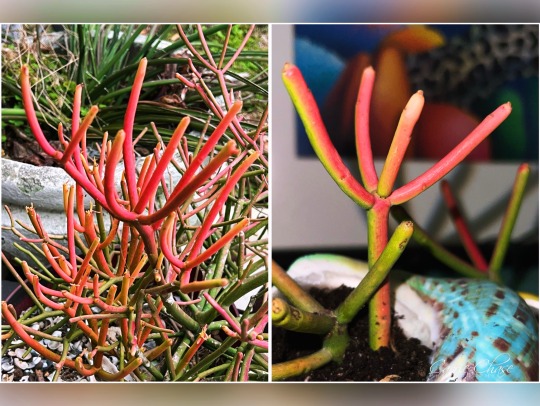
Firestick
Euphorbia tirucalli
My friend gave me a few cuttings from her plant. I am not a plant person so we’ll see how this goes. It’s very pretty though.
It’s native to Africa and not invasive here but makes for a pretty ornamental plant.
It’s interesting she has this plant because it thrives well in a low humidity area 😆 The more I learn about this plant the less I think I’ll be able to keep it alive.
It produces a latex (sticky plant fluid) that is quite toxic but is also used to feed cows in places. Makes me wonder about the cows!
#firestick #Euphorbiatirucalli #citizenscience #succulent #plant #outdoors #indoors #nature #january #january27 #2025 #picoftheday #project365 #day27
1.28.25
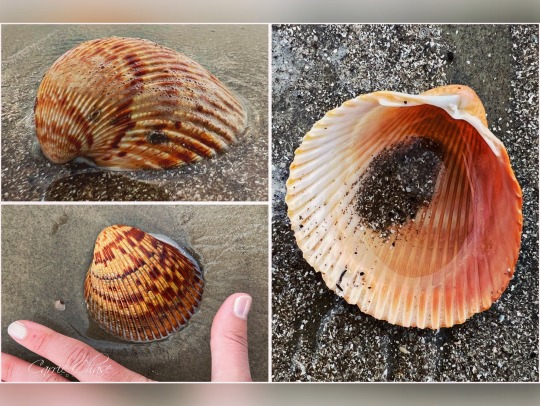
Giant Atlantic Cockle
Dinocardium robustum
This large, saltwater clam can be found all along the North American coast, the Gulf of Mexico and in the Caribbean. This particular shell was observed on Galveston Island beach 1.26.25.
We’ve been having extreme low and high tides and these beautiful shells are usually found when the tide is very low.
They use their foot to burrow into the sand and also “leap” away from predators like sea stars!
Though this shell was just one half I have been lucky enough to come across some that still had their inhabitants.
#giantatlanticcockle #Dinocardiumrobustum #citizenscience #shell #beach #nature #outdoors #january #january28 #2025 #picoftheday #project365 #day28
#citizen science#outdoors#nature#fauna#mammal#native#fox squirrel#animal#white-winged dove#birds#dunlin#savannah sparrow#common raccoon#raccoon#omnivore#firestick#succulents#flora#plants#giant Atlantic cockle#shell#beach#bivalve#mollusk
3 notes
·
View notes
Text
Missing Home - A dive into the differences between Guelph, ON and Indianapolis, IN wildlife.
I’m feeling a bit homesick at the moment and since we’ve been given the equivalent of a bingo free space this week for our blog posts, I thought I’d take the time to discuss some interesting differences between the wildlife where I grew up and the wildlife here, in Guelph.
I am from Indianapolis, the capital of the state of Indiana in the United States. Indy is essentially right in the center of Indiana. It’s about 650 kilometers (or roughly 400 miles, for those of us who grew up in the US) as the crow flies from Guelph to Indianapolis and takes me about 8 hours to drive from there to here.

Because of its proximity, the wildlife in Indiana doesn’t differ too drastically from what is found here in Guelph. But Indiana is a bit further south, so there are some contrasts.
When I first arrived in Guelph, having never stepped foot into Canada before, I immediately clocked the black morph of a Grey Squirrel scampering up a tree and thought, “well that’s new...”. Never, in my entire life, had I seen a black squirrel (truly, I didn’t even know they existed until about six months ago).
Now, we do have Grey Squirrels (Sciurus carolinensis) in Indiana. But the black morph is virtually non-existent. I found this interesting map from a paper by Richard Lehtinen et al. that shows the distribution of the black morphs, take a look:

What we do have a lot of, that is not present here in Ontario, are Fox Squirrels (Sciurus niger).
Can I trust you with a quick secret, reader? I’m going to go ahead and assume you're great at keeping secrets and tell you: I didn’t know Fox Squirrels were a thing until I started doing research for this blog post. I’ve always just assumed all the squirrels I was seeing in my backyard were Eastern Grey Squirrels and I left it at that. But apparently not!
What are the differences between grey squirrels and fox squirrels, you might ask? Great question.
Fox squirrels are generally chunkier than grey squirrels by a pound or two and are a little longer as well. Fox squirrels also tend to be more orange/brown in color. Grey squirrels have white bellies and the tips of the hairs on their tails tend to be white, whereas the fox squirrel tends to have yellow, orange, or brown coloring on its belly and tail.
Now it’s everyone’s favorite part of learning: test time! Knowing what you know, try to distinguish which squirrel is which in the pictures below.

Photo Credit: Jim McCormac

Photo credit: National Geographic Kids
ANSWER: The first photo shows a Fox Squirrel and the second shows a Grey Squirrel.
If you’d like to read more about the differences between Fox and Grey Squirrels, check out the citations at the bottom of this post to see where I pulled my info from.
Indiana is also home to a type of turtle that is very close to my heart that is not found here in Guelph: The Eastern Box Turtle (Terrapene carolina carolina). I have moved many of these lil’ guys off the road back home.
A more terrestrial variety of turtle compared to turtles found here in Guelph (like the painted turtle or snapping turtle), they’re commonly found in deciduous or mixed forests, like this one I spotted just chillin’ on a trail in a park back home.

Interestingly, the Eastern Box Turtle is known to be the largest freeze-resistant animal in the world.
During winter, these turtles will brumate, which is the reptile version of hibernation. During brumation, box turtles will dig a hole in the ground using their legs and their largely domed carapace (or shell) and remain there until spring. Many turtles will not eat or drink or really move much at all during brumation.
Once again, if you’re interested in reading more about box turtles, the citations at the bottom of this post will give you resources to check out.
Of course there are a lot more things I could talk about, but to save this blog post from getting too much away from me we’ll leave it at just discussing the two species. In the future, if you’ve moved to come to the University of Guelph and you aren’t from here, I hope you keep in mind the differences between where you’re from and where you are now. Noticing these differences can lead you to some very interesting discoveries and can potentially make good fodder for interpretive talks.
Citations
Eastern box turtle. ontario.ca. (2016, June 15). https://www.ontario.ca/page/eastern-box-turtle#:~:text=Eastern%20Box%20Turtles%20are%20terrestrial,as%20meadows%2C%20wetlands%20and%20shorelines.
Gray and Fox Squirrels - Oklahoma State University. Gray and Fox Squirrels | Oklahoma State University. (2017, April 1). https://extension.okstate.edu/fact-sheets/gray-and-fox-squirrels.html
Navarrette, A. (2024, September 13). Brumation in turtles and tortoises: Taking caring of reptiles. TVMF. https://www.tvmf.org/articles/brumation-in-turtles-and-tortoises/
Image Citations:
First Map: First Research State and Province Profiles. First Research. (n.d.). https://www.firstresearch.com/state-province-profiles.aspx
Second Map: Lehtinen, R. M., Carlson, B. M., Hamm, A. R., Riley, A. G., Mullin, M. M., & Gray, W. J. (2020). Dispatches from the Neighborhood Watch: Using Citizen Science and field survey data to document color morph frequency in space and time. Ecology and Evolution, 10(3), 1526–1538. https://doi.org/10.1002/ece3.6006
Fox Squirrel: Delmarva fox squirrel: A Foxy Squirrel indeed. Delmarva Fox Squirrel: A foxy squirrel indeed. (2022, March 29). https://jimmccormac.blogspot.com/2022/03/delmarva-fox-squirrel-foxy-squirrel.html
Grey Squirrel: Eastern gray squirrel. Animals. (n.d.). https://kids.nationalgeographic.com/animals/mammals/facts/eastern-gray-squirrel
4 notes
·
View notes
Text

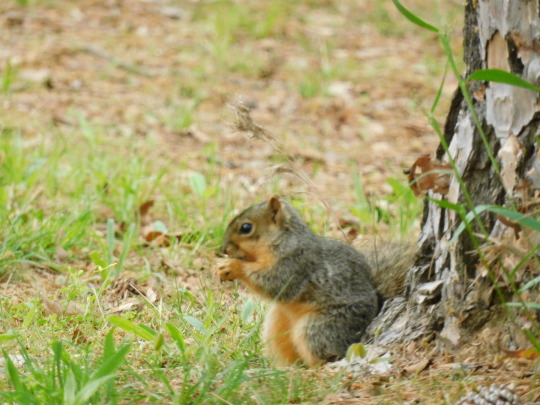
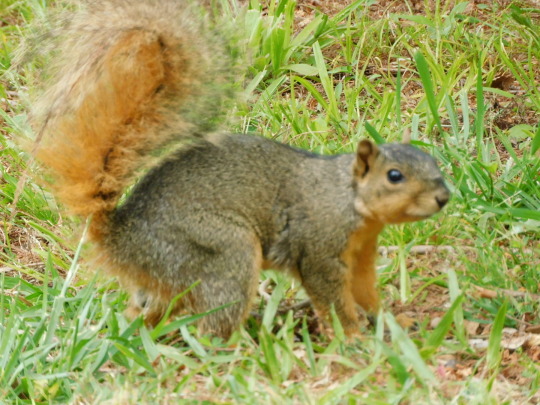

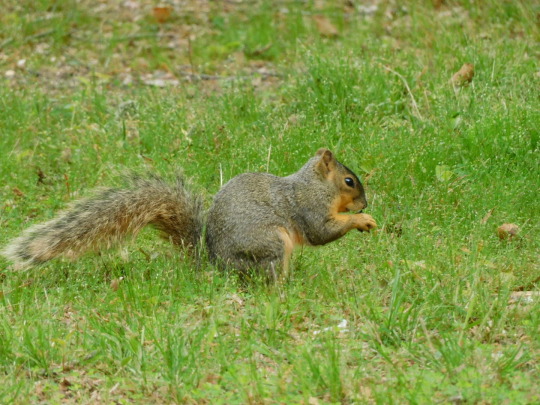
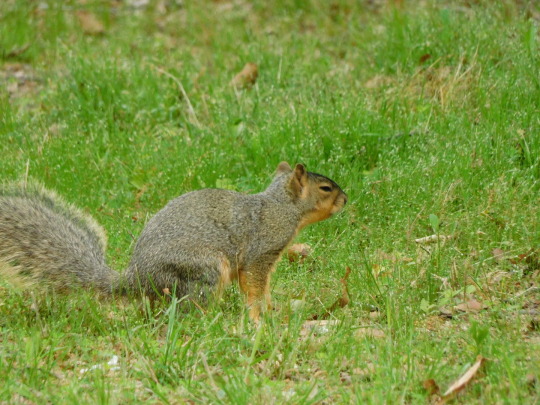
some fox squirrels (Sciurus niger) i saw on my walk today
10 notes
·
View notes
Text

Eastern Fox Squirrel ~ Bryant's Fox Squirrel ~ Sciurus niger ~ Écureuil fauve ~ Écureuil renard ~ Devouring a Kiwi in our Garden in Berkeley, California
#Squirrel #EasternFoxSquirrel #Bryant'sFoxSquirrel #Sciurus #Scirurusniger #Écureuil #ÉcureilFauve #ÉcureuilRenard #Kiwi #Berkeley #California #CA #Wildlife #closeup #closeupphotography #macrophotography #macros ~ https://www.flickr.com/photos/rachidh/albums
0 notes
Text
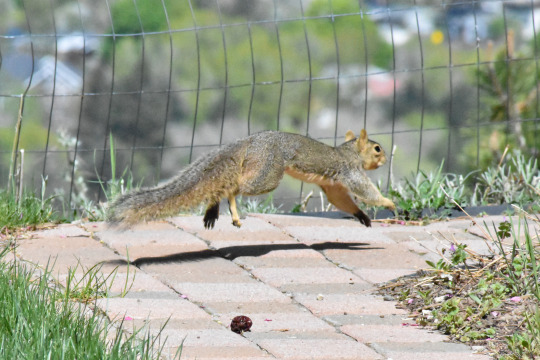
fox squirrel (Sciurus niger) - may 2022
0 notes
Text
Tree squirrels (Eichhörnchen)
Rodents
The genus Sciurus contains most of the common, bushy-tailed squirrels in North America, Europe, temperate Asia, Central America and South America.
Scientific name: Sciurus
Family: Sciuridae
Phylum: Chordata
Sciurus - Wikipedia
Identification. In this chapter, tree squirrels are divided into 3 groups: large tree squirrels, including the eastern gray squirrel (Sciurus carolinensis) and fox squirrel (Sciurus niger); small tree squirrels, including the red squirrel (Tamiasciurus hudsonicus); and.
Squirrels are known to run up trees in circles for a few reasons. One of the main reasons is to confuse potential predators. By running in circles, they make it difficult for a predator to track their movements and anticipate their next move
The black giant squirrel or Malayan giant squirrel (Ratufa bicolor) is a large tree squirrel in the genus Ratufa native to the Indomalayan zootope.
The world’s largest squirrel is the Indian or Malabar giant squirrel (Ratufa indica), endemic to deciduous and moist evergreen forests in peninsular India. It can grow to 1 m in total length, two thirds of which constitute its long bushy tail
298 notes
·
View notes
Text

Eastern Fox Squirrel Sciurus niger
8/7/2022 Orange County, California
#squirrel#squirrels#fox squirrel#fox squirrels#rodent#california#california wildlife#nature#nature photography#photographers on tumblr#my photos
12 notes
·
View notes
Text


Eastern Fox Squirrel
Sciurus niger
#wildlife photography#nature photography#animals#my photos#nature#original photography#photographers of tumblr#squirrel#mammal#eastern fox squirrel
5 notes
·
View notes